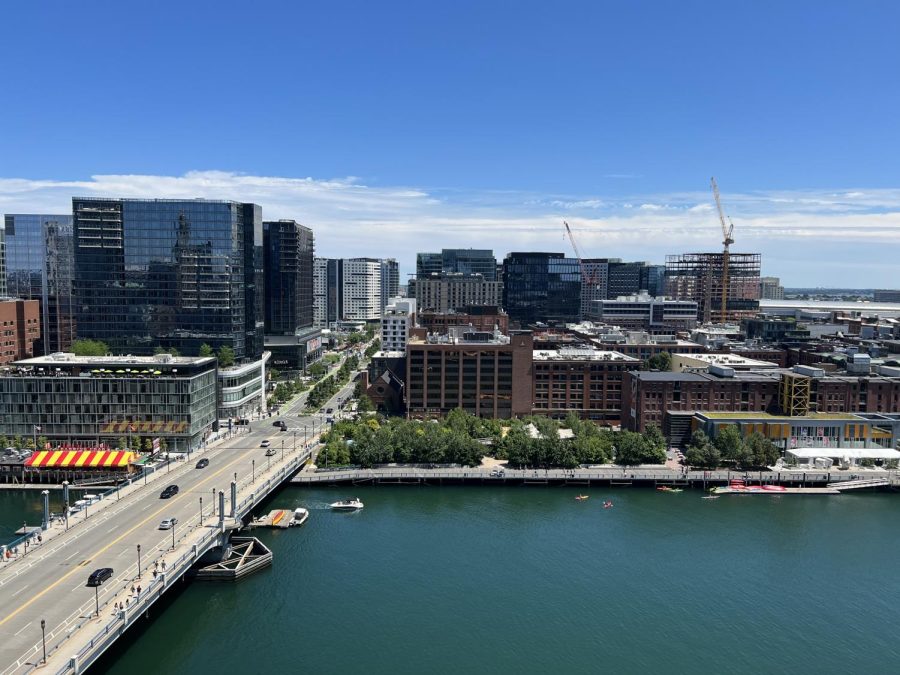Monday marked the one-month anniversary of the 9.0 magnitude Tohoku earthquake and tsunami that ravished the eastern coast of Japan. This earthquake, which triggered extremely destructive tsunami waves of 124 feet, is the most powerful known earthquake to have hit Japan, and one of the five most powerful earthquakes in the world since modern record-keeping began in the early twentieth-century. Global positioning stations closest to the epicenter jumped eastward by as much as 13 feet, which means that Japan is now 13 feet closer to the coast of California.
In addition to this physical shift, the universal clock may feel a change as well. Richard S. Gross, a scientist at NASA’s Jet Propulsion Laboratory, calculated that the 24-hour day as most know it, is over. The earthquake shortened the day by 1.8 millionths of a second. While this piece of news is not exactly “ground-shaking,” the greater repercussions of the earthquake certainly were.
Four nuclear power stations were automatically shut down after the earthquake, and two of the stations’ diesel backup power systems were destroyed. At one station, Fukushima I, two large explosions were seen, along with large amounts of radioactive leakage. Over 200,000 people had to be evacuated from the area. Although steps have been made in the right direction to contain the radioactive water built up beneath the reactors, they are no closer to the restoration of damaged cooling systems.
On Tuesday, Japan put this nuclear accident on par with the 1986 explosion in Chernobyl after the radiation leaking from the plant was found to surpass the estimate in mid-March of a Level 5. It is now estimated to be a Level 7, which is the highest level possible on the globally-recognized scale. Officials, however, say that this does not mean the situation is any more critical.
“The situation at the Fukushima Dai-Ichi plant is slowly stabilizing, step by step, and the emission of radioactive substances is on a declining trend,” said Prime Minister Naoto Kan.
Japan, unfortunately, has been given more than it can chew, and its plate keeps piling up. Multiple aftershocks, including some with magnitudes of 7.0 and up, have been hitting the country relentlessly. On April 7, an aftershock caused the loss of external power to a reprocessing plant, as well as the Higashidori Nuclear Power Plant, with backup generators remaining functional. The Onagawa Nuclear Power Plant lost three of their four external power lines, and lost their cooling function for an hour and a half. Even more radioactive water was spilled in this setback.
One aftershock, which hit Monday, had a magnitude of 7.1. This shock came at an untimely hour, just as the government announced the widening of the evacuation zone around the Fukushima Daiichi nuclear plant. Due to rising radiation, more villages, including some as far as 25 miles away from the plant, are now included in the extension of the evacuation zone.
Japan temporarily issued tsunami warnings for the northeastern coast, although they were later lifted and were met instead with landslides. Another earthquake, with a magnitude of 6.4 struck Japan on Tuesday. Six people were killed when a landslide buried three homes in the city of Iwaki. An unknown number of people are still believed to be trapped.
Japan’s economy, in the wake of all aftershocks and earthquakes, has stalled once again in seven out of nine regions, according to the Bank of Japan. This is due to a number of factors, including the damages sustained in production facilities, supply-chain distributors, and constraints on electricity-use across the entire country.
As of this week, the death toll has risen to 13,127 deaths, 4,793 injured and more than 14,000 people missing. In late March, the World Bank estimated the damage in Japan to equal between $122 billion and $235 billion. Japan’s government, however, said the cost of the earthquakes and the tsunami could reach nearly $310 billion, making it the world’s most expensive natural disaster on record.






